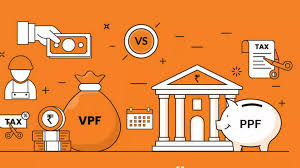Voluntary Provident Fund (VPF) is a voluntary fund contribution from the employee towards his Provident Fund account. This contribution is beyond the EPF contribution. It is not a compulsory investment but is usually opted for by individuals to secure the retirement phase.
The maximum contribution in VPF is up to 100% of the basic salary and dearness allowance. Note that the interest earned on VPF is at the same rate as the EPF.

What is Voluntary Provident Fund?
Voluntary Provident Fund (VPF) aka Voluntary Retirement Fund is a voluntary fund contribution from the employee towards his Provident Fund (PF) account. This contribution is beyond the 12% of contribution by an employee towards his EPF. The maximum contribution is up to 100% of Basic Salary and Dearness Allowance. Interest is earned at the same rate as the EPF.
Employers are under no obligation to contribute to their employees’ VPF portfolio. Likewise, an employee is also under no obligation to contribute to the VPF. Once the contribution is chosen in VPF, the same cannot be terminated or discontinued before the base tenure of 5 years is completed.
Features of Voluntary Provident Fund
enure | Up to resignation/retirement |
Interest rate | 8.15% |
Investment Amount | The amount depends on the employee |
Maturity Amount | The amount depends on the investment |
Eligibility Criteria
Individuals who are employed in the organised sector of the economy are eligible for a Voluntary Provident Fund. Moreover, EPF is only mandatory for organisations that employ more than 20 individuals. Therefore, one must work in an EPF-recognised organisation to have a Voluntary Provident Fund.
Organisations with less than 20 employees might also choose to open an EPF account for their employees. However, that depends on the employer and not the employee. If such an employer chooses to open EPF accounts for their employees, only then can such employees create a VPF.
Maturity Period
The minimum lock-in period for a Voluntary Provident Fund is 5 years. Moreover, since a VPF is maintained through an EPF account, an individual can withdraw such amount upon retirement, unemployment for more than 2 months, or to defray the following expenses –
- Repayment of loan
- Purchasing or constructing a residential property
- Education of child
- Marriage of self or someone dependent
- Medical reasons
Nevertheless, the minimum threshold to avail of all VPF tax benefits is 5 years. If an individual chooses to withdraw before 5 years of lock-in, then he/she might lose out on exemptions.
How to Open a VPF Account
To open a Voluntary Provident Fund account, an employee should connect with his employer or the HR team of the company in writing, stating his/her objective to open a VPF account. He should duly mention deducting an additional amount from the salary for contribution to this fund. He should also specify the monthly contribution amount he wishes to invest.
Note that an employee can open a VPF account at any time of the year, however, he/she cannot discontinue the investment under this scheme during the financial year.
How to Check VPF Balance
- Go to the official website of EPFO.
- Click on ‘Our Services’ and select ‘For Employees’.
- Choose ‘Member Passbook’ under ‘Services’.
- Fill in the UAN and password and click on ‘Login’.
- Select the Member ID and click on ‘View Passbook’.
- You can find all the details in the EPF passbook regarding your account.
FAQs
What is the distinction between VPF and EPF?
The VPF is an extension of the EPF. In order to open an EPF account, a person must contribute a minimum of 12% of his Basic Salary and Dearness Allowance to the fund. It is a voluntary contribution with a maximum ceiling of 100% in a VPF.
If I change jobs, will my VPF account be affected?
Your Aadhar Card is linked to your VPF account. As a result, moving your account from one employer to another is very simple.